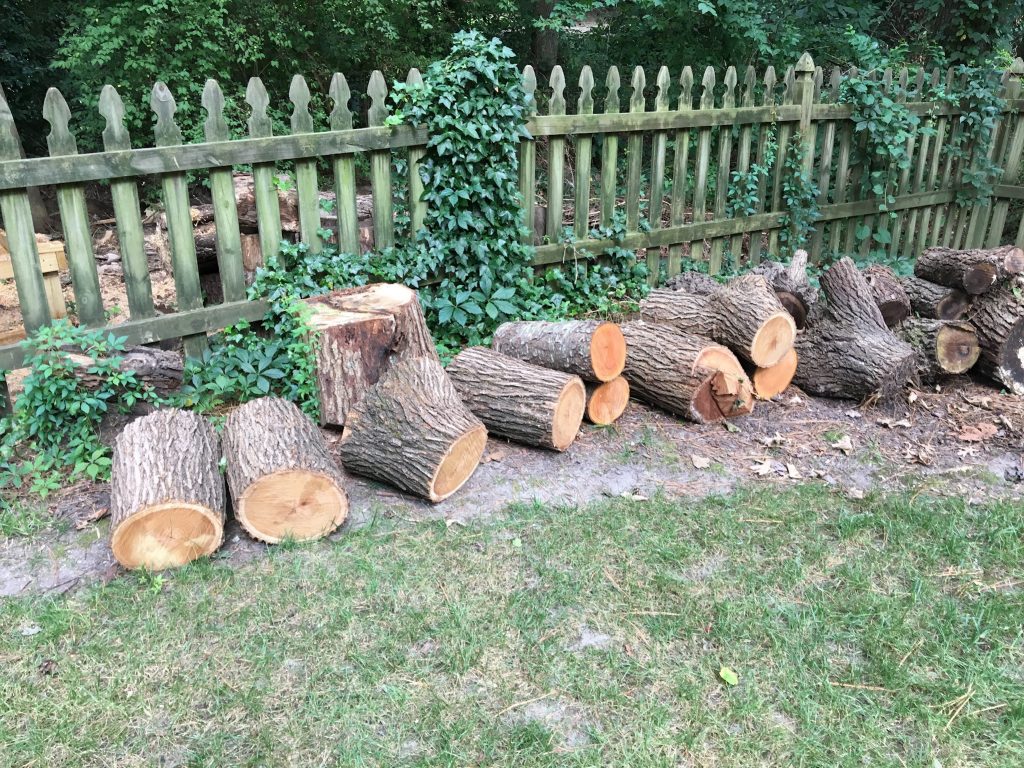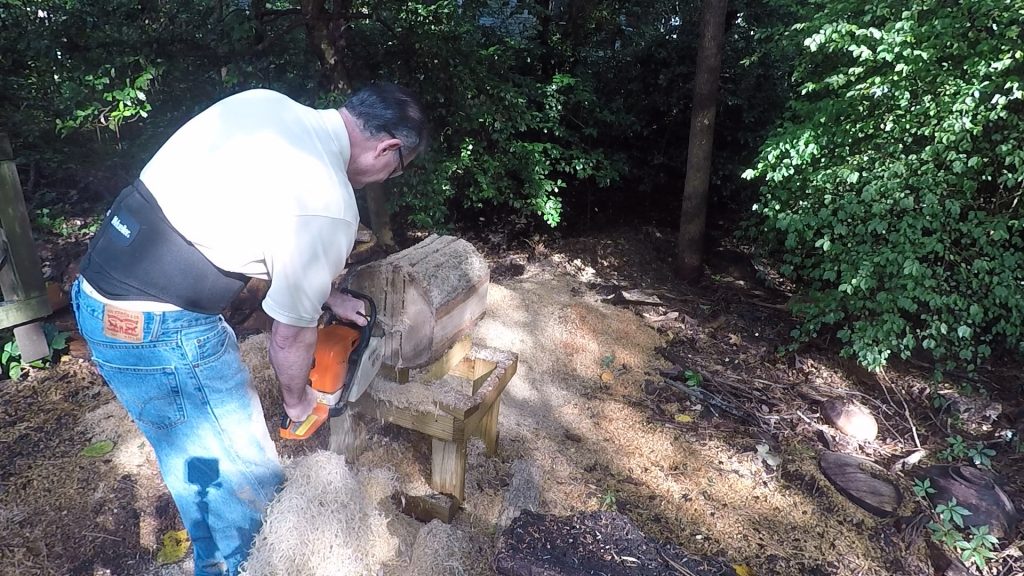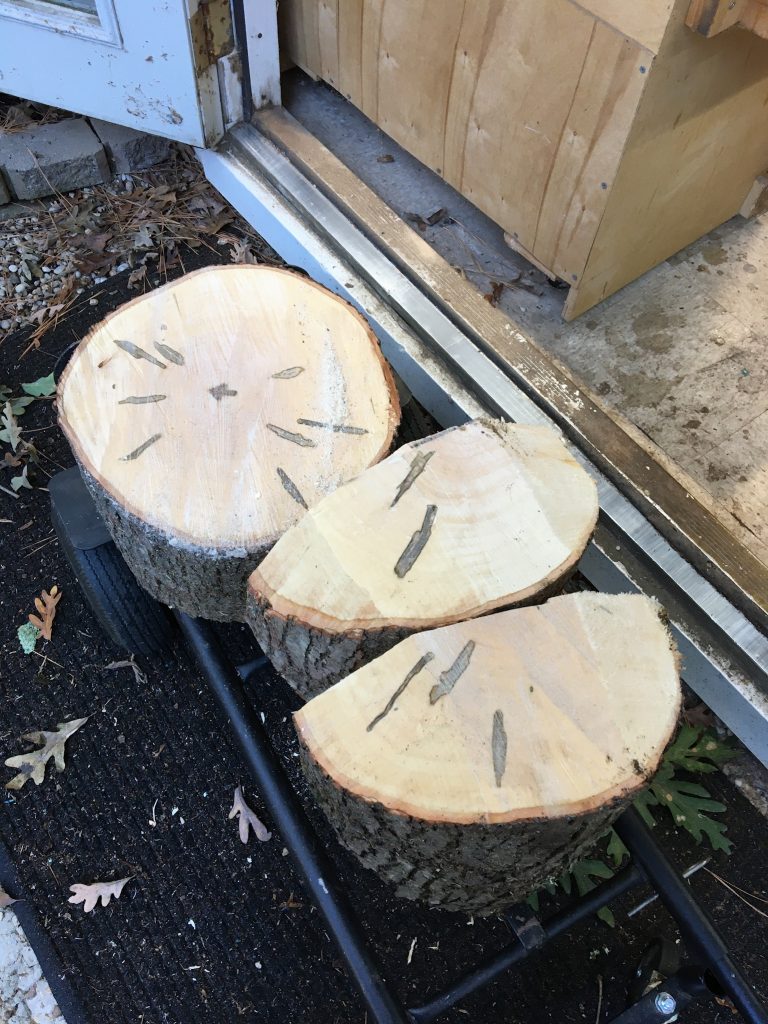
Salvaged Trees 
Processing Log 
Blanks
When I am making a large hollow form or a centerpiece bowl there is a lot more involved than just the actual turning.
You first have to acquire the wood which I do by salvaging trees that have been either felled in a storm or have been cut down due to disease or development. I have several resources for trees and logs that include local tree surgeons, the landfill or just listening for chainsaws in the distance.
I work with a multitude of species of trees that are mainly indigenous to the East Coast. Once the tree is acquired it has to be cut into manageable sections which can still weigh in excess of 60 pounds depending on the species and how long the tree has been on the ground. These sections then have to be sealed to prevent as much cracking and checking as possible, while waiting to be turned, with a wax based product.
Now it is time to cut and prepare the log into a turning blank depending on what type of piece you are looking to make. Once that is accomplished you are ready to mount the blank or whole log, depending on orientation, onto the lathe. Once the turning and shaping process starts you are now waiting for the wood to “speak” to you…telling you what shape and form it wants to be…and hopefully you have listened well enough to have achieved the best artistic piece within the log. Once you have the form figured out you now have to decide if you are going to turn the piece once, from start to finish, or are you going to rough turn now…allow the piece to dry, for up to a year or more, depending on size and wall thickness and then do the final shaping and sanding once it was allowed to dry. Usually my hollow forms are turned once, allowing nature to dictate some of the final form, and my lidded hollow forms, cremation urns and bowls are turned twice.
Now you have a piece that is in need of a finish. There are several options depending on intended use or how you want to piece to look and feel. The finishes that I use range from hand rubbed oil and three stage buffing process to sprayed lacquer to epoxy resin…all requiring a lengthy process as all my pieces are finished to a gallery quality.
I am hoping now you have a greater understanding of what goes into making my artistic pieces. When you take into account all the skill, the time and the energy that goes into the process and then add to that the equipment and tools required you get a better appreciation for the value of the pieces.
S. Stover


